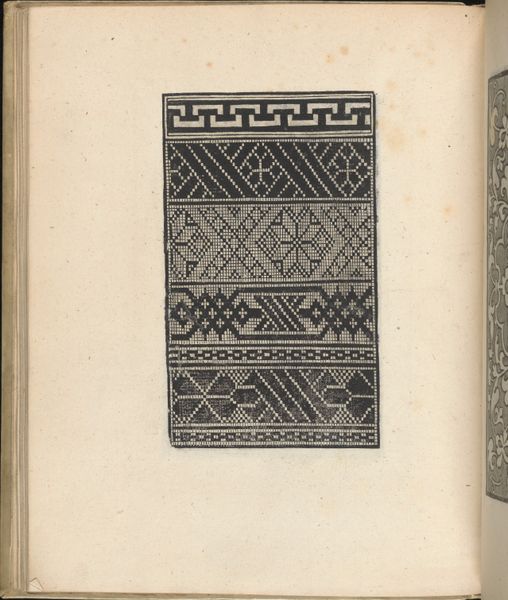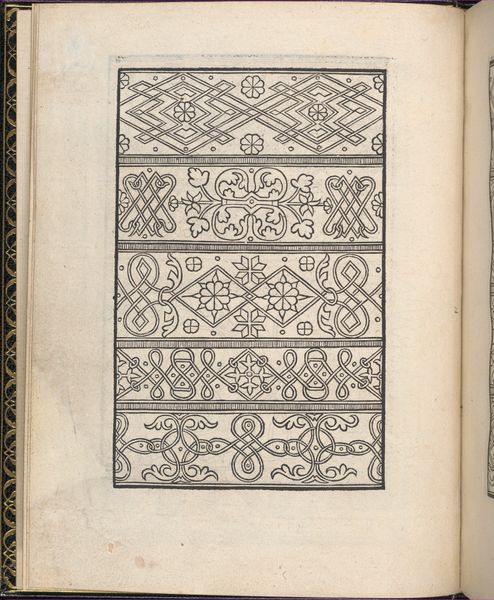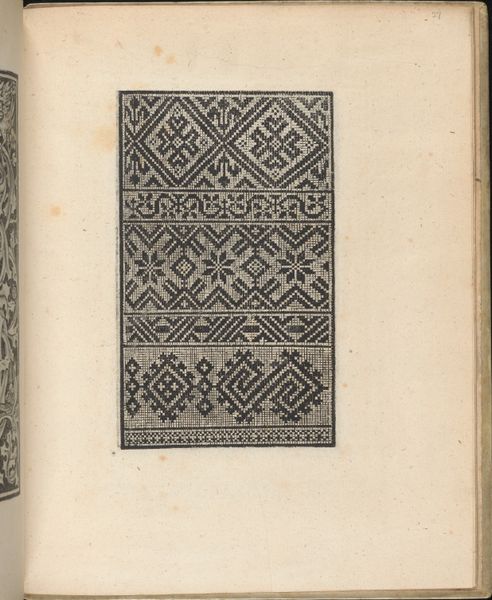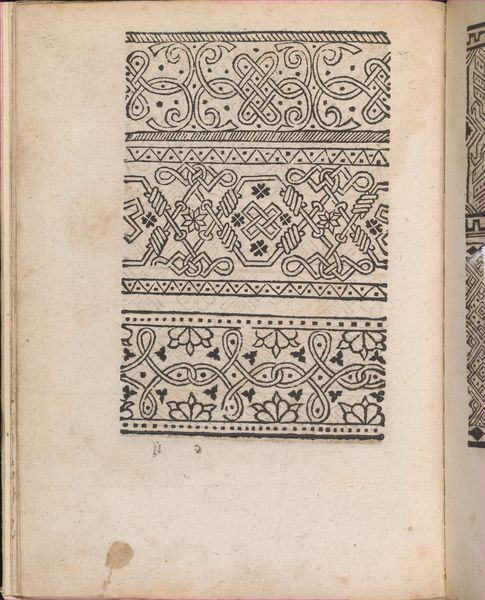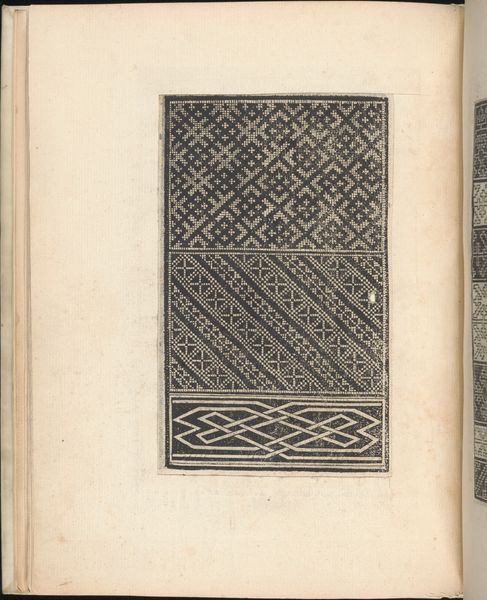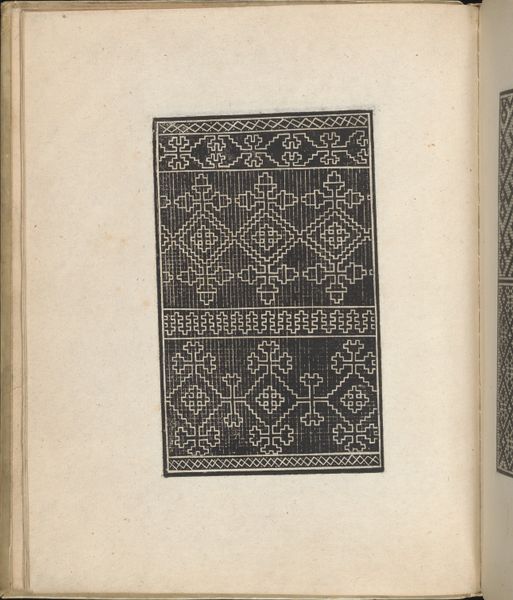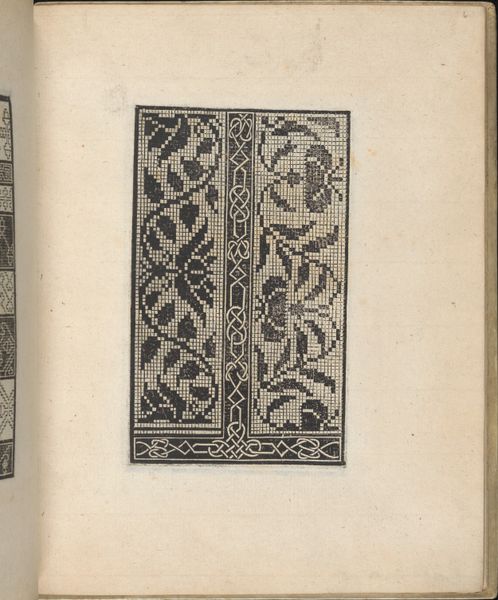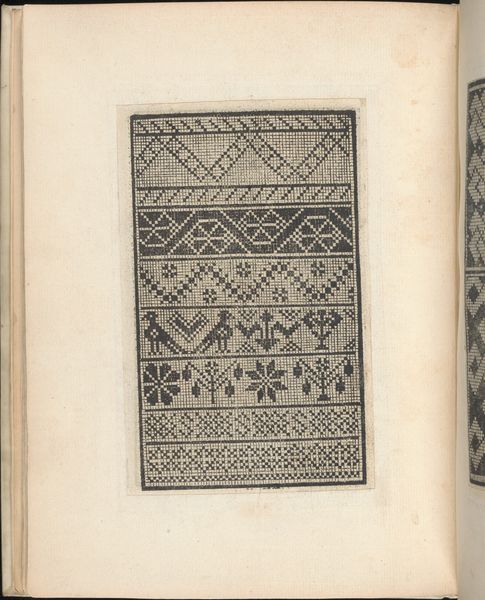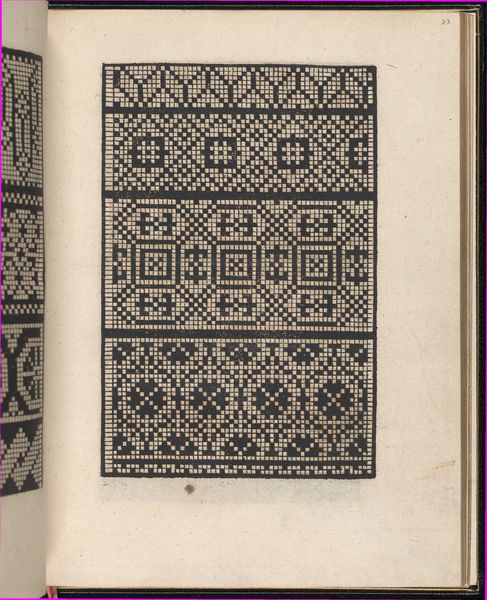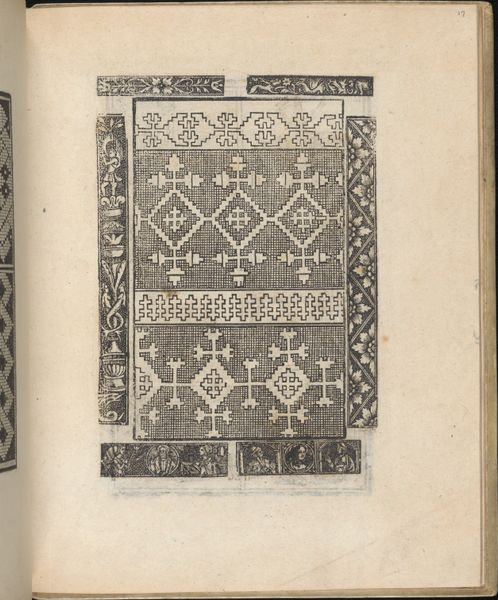
drawing, print, engraving
#
drawing
# print
#
11_renaissance
#
geometric
#
decorative-art
#
italian-renaissance
#
engraving
Dimensions: 9 5/16 x 7 1/4 x 15/16 in. (23.7 x 18.4 x 2.4 cm)
Copyright: Public Domain
Curator: This page, "Esemplario di lavori, page 8 (verso)," comes from a 1529 engraving by Nicolò Zoppino. It's part of the decorative arts collection here at the Met. Editor: It has this really striking quality... almost hypnotic, with the repetition. It reminds me a little of textile design, even pixel art. Is that intended? Curator: Exactly! These “Esemplari” were pattern books for lacemakers and embroiderers. This one features various geometric designs. The material process – the act of engraving, and its relationship to textile production—becomes a crucial point. This wasn't high art; it was functional, geared toward a specific form of labor. Editor: And primarily women’s labor, right? How did publications like this shape women's lives, both creatively and economically? Did it offer opportunities, or did it further define their roles in the domestic sphere? Curator: I think both. These books certainly reinforced expectations. But they also provided access to new designs, and therefore perhaps a degree of autonomy in creation and consumption. Consider the skill involved—the translation of these patterns to different material surfaces by the lacemakers. It elevates craft, challenging any strict dichotomy between “art” and “craft." Editor: It's intriguing to consider this from a contemporary perspective, too. So much of what we consider design now is also rooted in algorithms and repeatable processes, almost blurring the line between handcrafted and machine-made. How much of an individual's work can be perceived when they engage with reproductive and decorative techniques, and in the past when they followed this pattern? Curator: I think it forces us to re-evaluate what we consider 'originality' in creative output. Editor: It’s amazing how a seemingly simple set of repeating geometric patterns can speak to so many complex issues. Curator: Absolutely. By engaging with the materiality and the context, we can reveal some hidden layers of creativity.
Comments
No comments
Be the first to comment and join the conversation on the ultimate creative platform.

